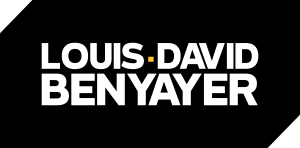Proprietary and closed data strategy has clear advantages but in some cases engaging in open data proves to have a bigger impact on competitive advantage.
One of the bases for competitive advantage is to master distinctive resources and capabilities. Having something the competitors do not have is a clear way to develop a competitive advantage. Patents, long term contracts, secrets, trademarks are some examples of proprietary practices used to prevent the competition to access a distinctive resource.
Data is no exception to that rule: having a distinctive data asset triggers two types of advantages when a firm keeps it proprietary. First, it increases differentiation and so increases the volumes or the price. Second, it opens new revenue sources when data is licensed to other firms which pay for having access to it.
However, for almost two decades now a lot of companies have challenged that hypotheses and have generated a lot of value doing exactly the opposite: making their data available, even sometimes to their competitors.
Open data in the public sector
The Open Knowledge Foundation defines open data in the following terms:
Open data is data that can be freely used, re-used and redistributed by anyone – subject only, at most, to the requirement to attribute and share-alike.
- Availability and Access: the data must be available as a whole and at no more than a reasonable reproduction cost, preferably by downloading over the internet. The data must also be available in a convenient and modifiable form.
- Re-use and Redistribution: the data must be provided under terms that permit re-use and redistribution including the intermixing with other datasets.
- Universal Participation: everyone must be able to use, re-use and redistribute – there should be no discrimination against fields of endeavour or against persons or groups. For example, ‘non-commercial’ restrictions that would prevent ‘commercial’ use, or restrictions of use for certain purposes (e.g. only in education), are not allowed.
Open data has first emerged in the public sector and is supported by two main arguments. First, releasing data on how governments and public organisations operate fosters trust through transparency. Second, this data can be used by individuals and firms to make better decisions or start new business opportunities which in turn generates more value for the states (through more taxes or reduced unemployment for example).
How to use open data to build an advantage
From using to supporting open initiatives, there are three ways to use open data to build a competitive advantage:
- Mix open data sets with your own data assets. With data being massively available new information is accessible and so better decisions can be made or new offers developed. Of course, this data is available for everyone but every company has specific datasets which value and interest would increase when merged with public datasets. It is the main hypothesis supporting McKinsey estimation of a yearly value of 3 000 B€ of open data.
- Open some of your data (under certain conditions). Telecommunications companies opened their users’ geolocation data to researchers and asked for innovative solutions based on that data. It was a very cost-efficient way to understand better how this data can be used to develop after data and analytics services based on this data. Waze develops partnerships with cities to give them access to some of their users data in exchange for civil works information. Opening the data is there a way to access cheaply to another data which helps to differentiate Waze from the other navigation systems.
- Support an open initiative. IBM funds the Linux Foundation and the company explains that their investment represents 20% of the cost required to maintain a proprietary operating system. More recently, Apple Amazon and Facebook invested a lot of resources in Open Street Map to counter the dominance of Google with Google maps.
Open data is not limited to transparency advocates and can turn out to be a major opportunity for building or sustaining a competitive advantage either by supporting innovation initiatives or by reducing massively costs or by undermining competitors advantage.
If you want to discuss how this can be possible for your company, let’s chat!

